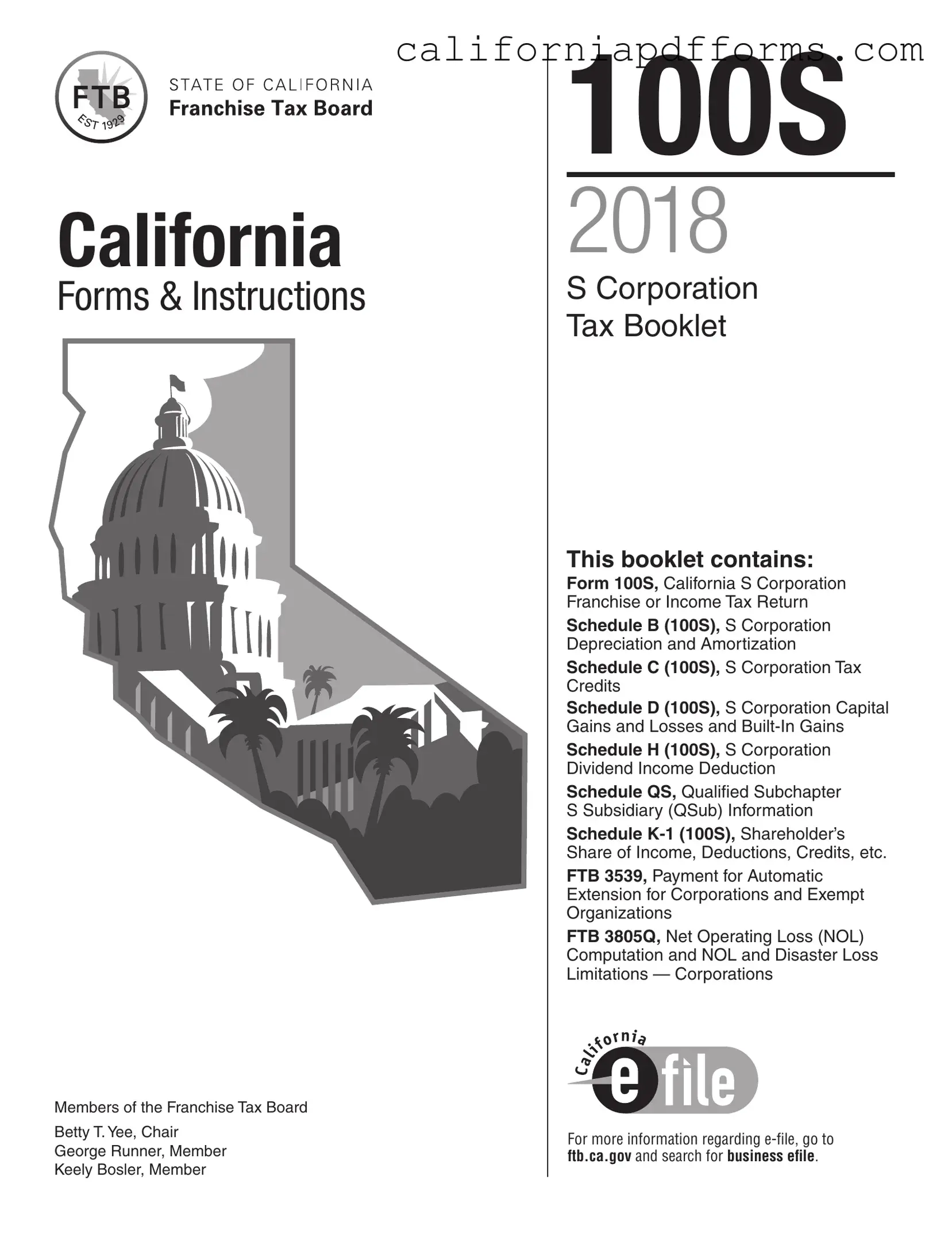The California 100S form is the California S Corporation Franchise or Income Tax Return. It is used by S corporations to report their income, deductions, and credits to the Franchise Tax Board (FTB). This form is essential for ensuring compliance with California tax laws.
Any corporation that has elected S corporation status and conducts business in California must file the 100S form. This includes both domestic and foreign corporations that have qualified as S corporations under federal law.
The 100S form includes several important schedules:
-
Schedule B: S Corporation Depreciation and Amortization
-
Schedule C: S Corporation Tax Credits
-
Schedule D: S Corporation Capital Gains and Losses
-
Schedule H: S Corporation Dividend Income Deduction
-
Schedule K-1: Shareholder’s Share of Income, Deductions, Credits, etc.
The filing deadline for the 100S form is typically the 15th day of the third month after the end of the corporation's tax year. For most corporations operating on a calendar year, this means the deadline is March 15. However, if an extension is filed, the deadline can be extended by six months.
Are there penalties for late filing?
Yes, there are penalties for late filing of the 100S form. If the form is not filed by the deadline, the FTB may impose a penalty. The penalty can be a percentage of the unpaid tax amount, and interest may also accrue on any unpaid taxes.
Yes, the 100S form can be filed electronically. The Franchise Tax Board allows e-filing for S corporations, making the process more efficient. Check with your tax preparation software to ensure it supports e-filing for the 100S form.
What if the S corporation has a net operating loss?
If the S corporation expects a net operating loss (NOL) for the taxable year, it may file form FTB 3593 to extend the time for payment of taxes for the preceding year. This allows the corporation to carry back the NOL to offset income from prior years.
When submitting the 100S form, include all required schedules, such as Schedule K-1 for each shareholder. Additionally, if applicable, attach any federal forms that are required for California tax purposes, such as Form 8886 for reportable transactions.
For more information, visit the Franchise Tax Board's website at ftb.ca.gov. You can find detailed instructions, updates on tax law changes, and resources for e-filing.
